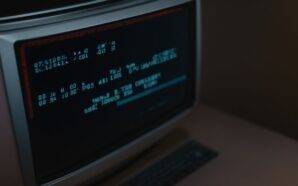Today we take email for granted; for many of us it has been around for longer than we have, but it hasn’t always been thus. Here we will take a look back in history to its early days and how it has grown up to become the monster it is today.
The first electronic communication medium was Morse code transmitted over the telegraph in the 1800s, though the first computer-based messaging dates back to mainframe computers in the 1960s. Mainframes were accessed over terminals, and when users needed to send messages to other users they would simply leave them in their personal folders; of course it meant that sender and recipient had to access the same computer.
The first electronic messages that were sent over a network were sent over ARPANet, and the first person to do so was Ray Tomlinson. He invented the email address which included the @ symbol. The word preceding it was the addressee and the word following it was the computer to which it would be sent. A number of developments followed, including email folders and better software; soon most of ARPANet’s traffic was email.
Once ARPANet was replaced by the internet new standards were needed. In the early 1980s the standard SMPT (simple message transfer protocol) was developed for e-mail handling and routing. It is used to send mail over the Internet from one mail server to another and from mail client to mail server. Other protocols such as POP (Post Office Protocol) and IMAP (Internet Message Access Protocol) are used for retrieving and managing email.
In the early 1990s MIME (Multipurpose Internet Mail Extensions) was developed so that text other than ASCII could be sent, and attachments such as images and files could be appended to email messages. The first email attachment was sent by the co-developer of the MIME format, Nathaniel Borenstein, in 1992.
Soon everybody wanted to use email, and with free email services, such as Hotmail and Yahoo!, it was easy to get an email address.
In parallel with these developments, email spam reared its ugly head. Spam refers to unsolicited emails that are sent to promote licit and illicit products, as part of a scam, and phishing emails which attempt to retrieve financial information from recipients.
Today every day there are around 300 billion email messages sent over the internet every day and a very large proportion of these are spam, contain viruses, and malware. Email management has become a huge challenge that requires a huge resource to handle; nevertheless without email the world as we know it would soon grind to a halt.








